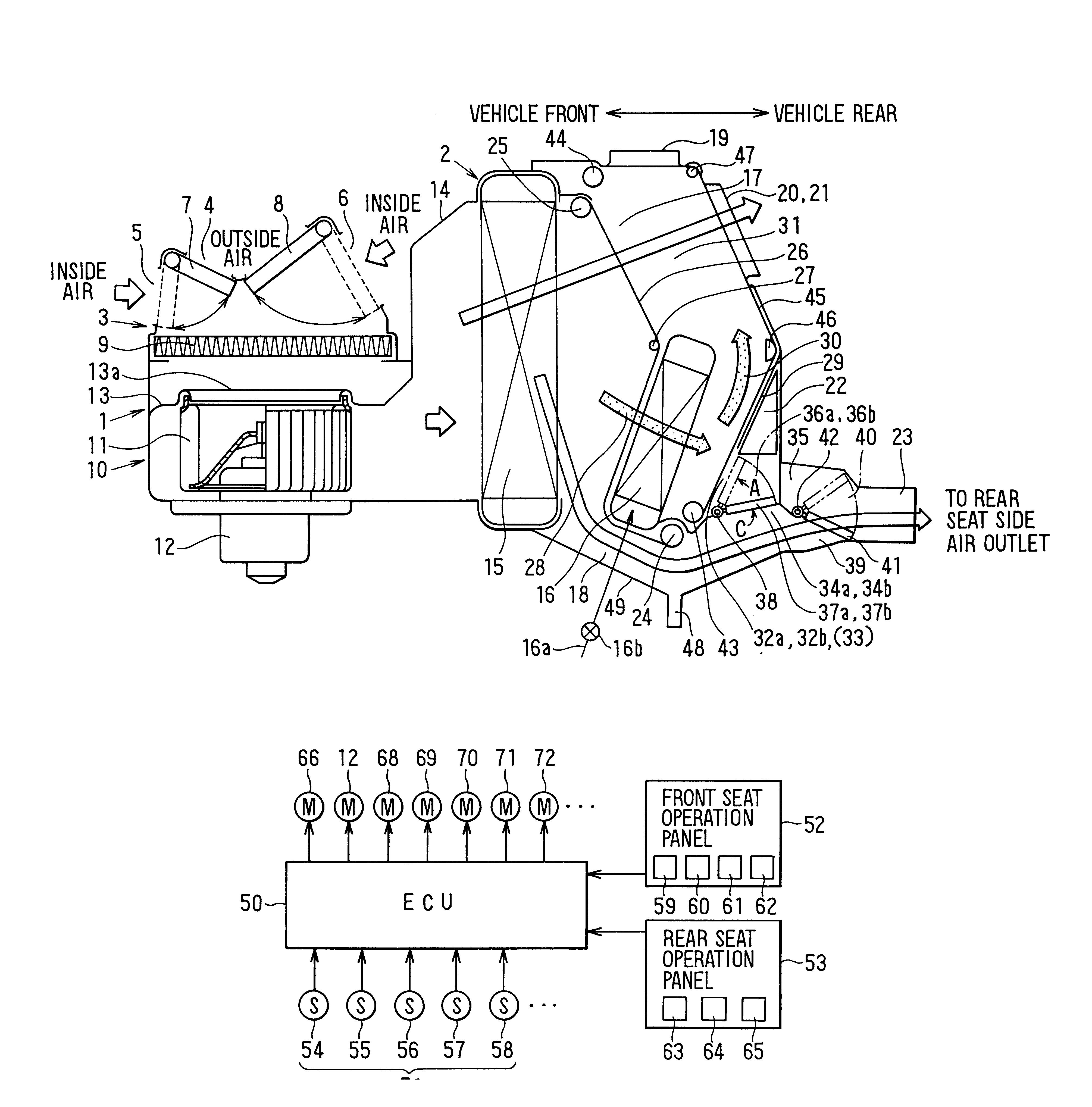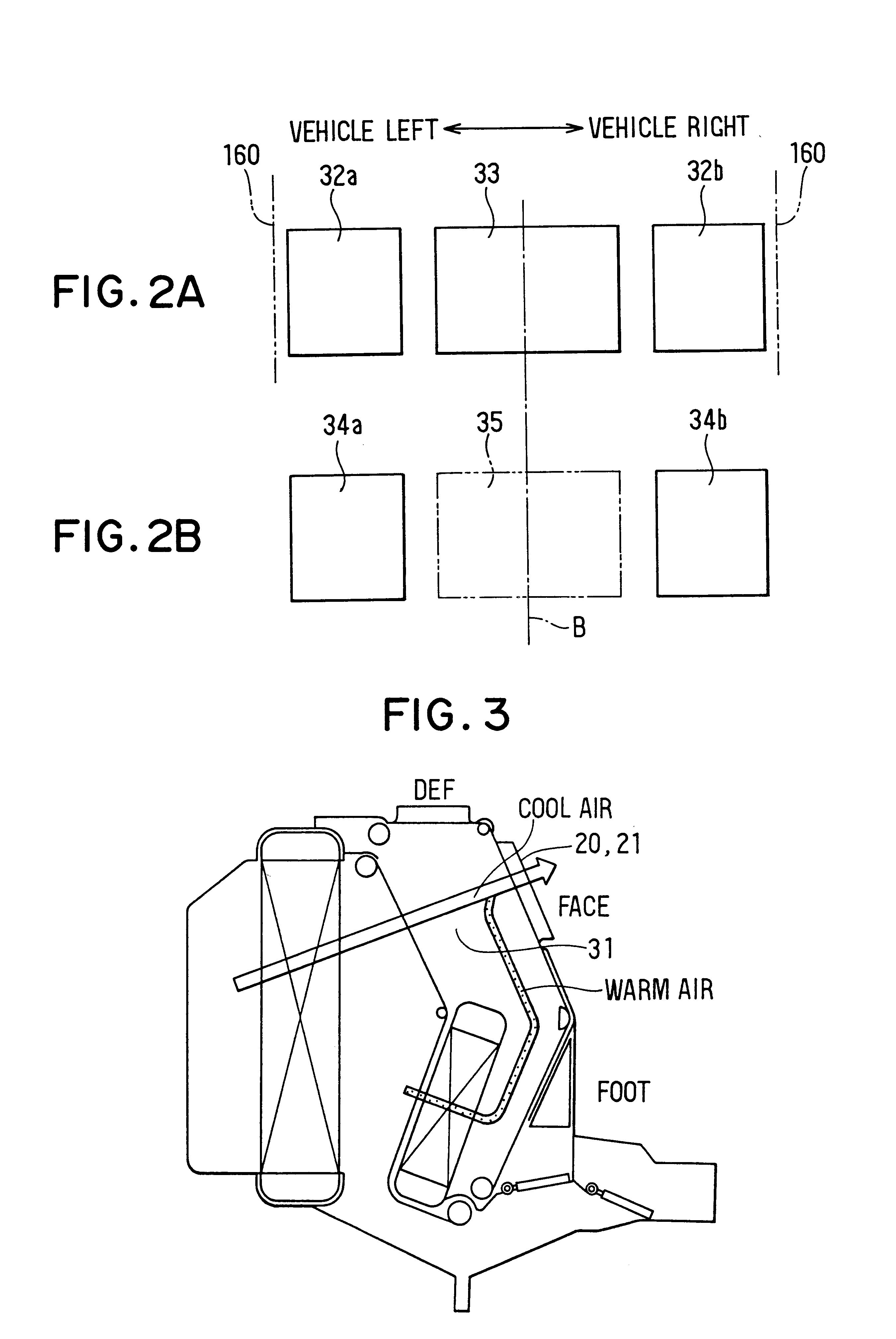Air conditioning apparatus for vehicle
a technology for air conditioning apparatus and vehicle, which is applied in the direction of vehicle cleaning, lighting and heating apparatus, machine operation mode, etc., can solve the problems of large loss in ventilation system, large loss in blower unit, and large pressure loss of ventilation system
- Summary
- Abstract
- Description
- Claims
- Application Information
AI Technical Summary
Benefits of technology
Problems solved by technology
Method used
Image
Examples
first embodiment
In the first embodiment, the air conditioning unit 2 is disposed at an approximate center portion in the left-right direction of the vehicle, under an instrument panel at a front side in the passenger compartment. The blower unit 1 is disposed at an offset position of the air conditioning unit 2 in the left-right direction of the vehicle. When the blower unit 1 is disposed in an engine compartment at an offset position relative to the air conditioning unit 2 in the left-right direction of the vehicle, the blower unit 1 can be disposed at the front side of the air conditioning unit 2 as shown in FIG. 1.
As shown in FIG. 1, the blower unit 1 has an inside / outside air switching box 3 at an upper side thereof. The inside / outside air switching box 3 includes an outside air introduction port 4 for introducing outside air (i.e., air outside the passenger compartment), inside air introduction Ad ports 5, 6 for introducing inside air (i.e., air inside the passenger compartment), and inside / ou...
second embodiment
even when the maximum cooling mode is set at the front seat side in the passenger compartment during the face mode, the temperature of air to be blown toward the rear seat side in the passenger compartment can be controlled, because the air mixing film member 26 has supplementary opening portion 26b except of the main opening portions 26a as shown in FIG. 12.
Each supplementary opening portion 26b is provided at a side of the first driving shaft 24 to have a predetermined opening degree which is greatly smaller than that of a main opening portion 26a.
Next, the operation of the air conditioning apparatus according to the second embodiment will be now described. Here, only different operation portions different from those in the first embodiment are described.
When the maximum cooling mode is set at the front seat side in the passenger compartment during the face mode and the maximum cooling mode is also set at the rear seat side in the passenger compartment, the air mixing film member ...
PUM
 Login to View More
Login to View More Abstract
Description
Claims
Application Information
 Login to View More
Login to View More - R&D
- Intellectual Property
- Life Sciences
- Materials
- Tech Scout
- Unparalleled Data Quality
- Higher Quality Content
- 60% Fewer Hallucinations
Browse by: Latest US Patents, China's latest patents, Technical Efficacy Thesaurus, Application Domain, Technology Topic, Popular Technical Reports.
© 2025 PatSnap. All rights reserved.Legal|Privacy policy|Modern Slavery Act Transparency Statement|Sitemap|About US| Contact US: help@patsnap.com



